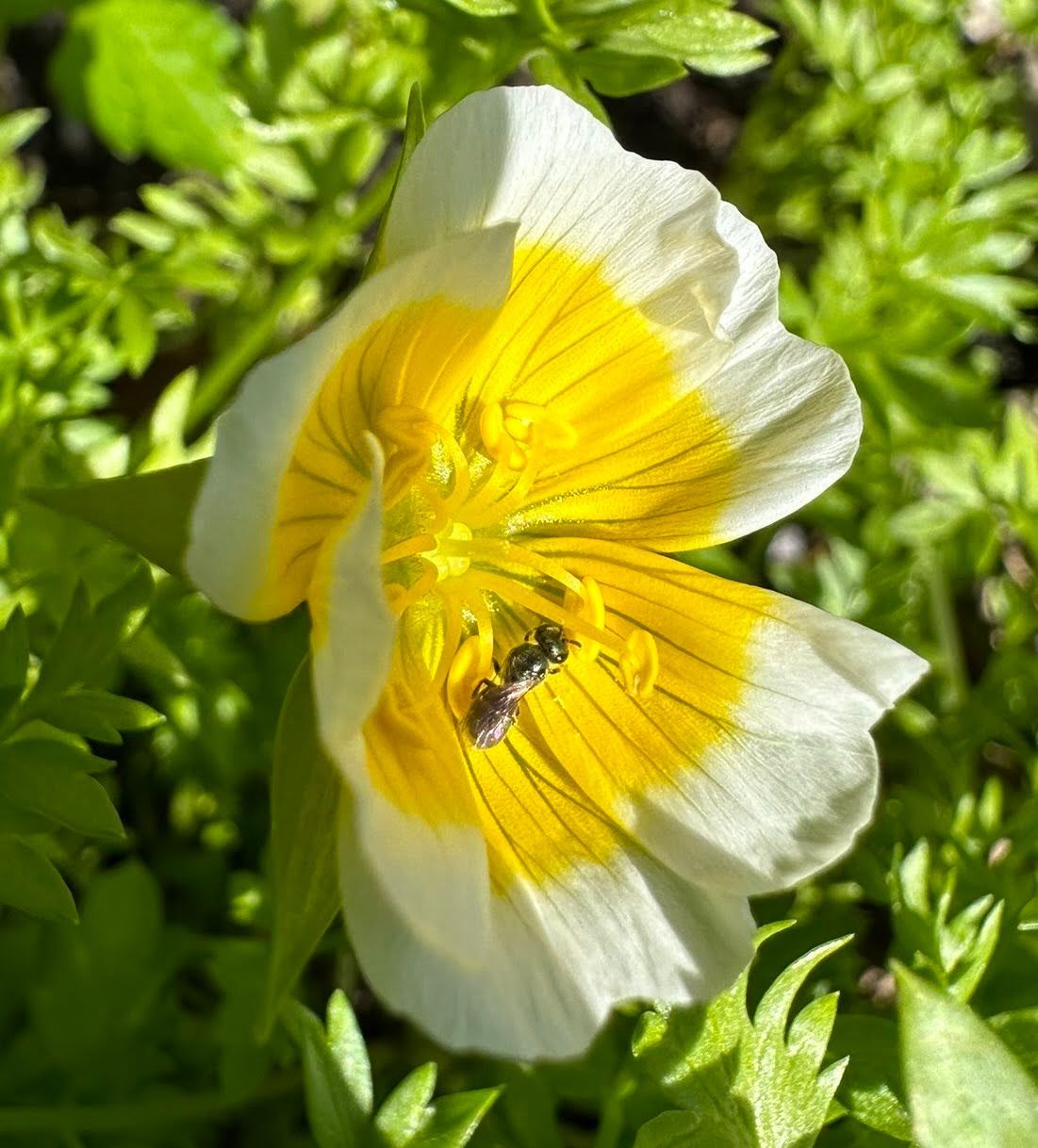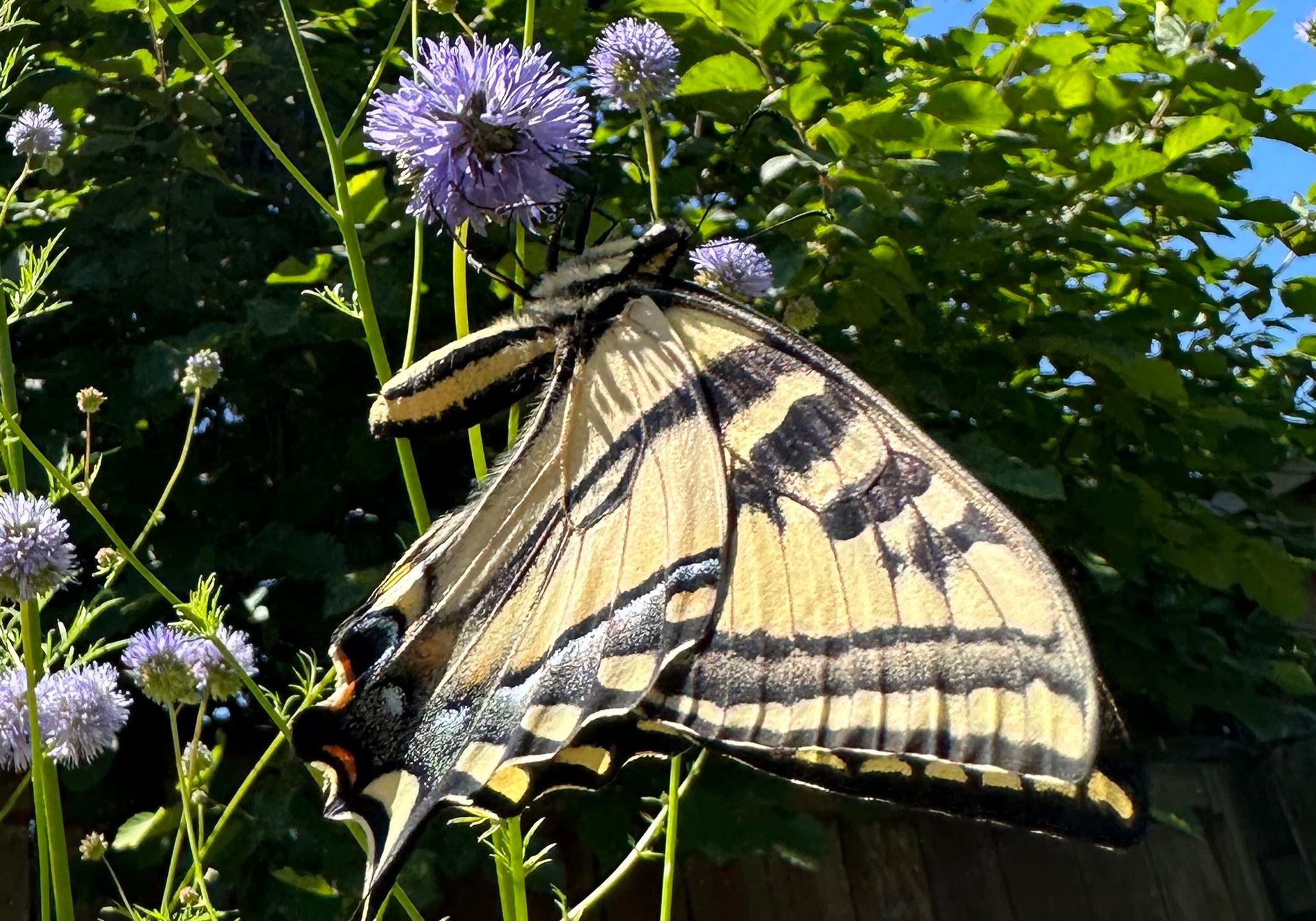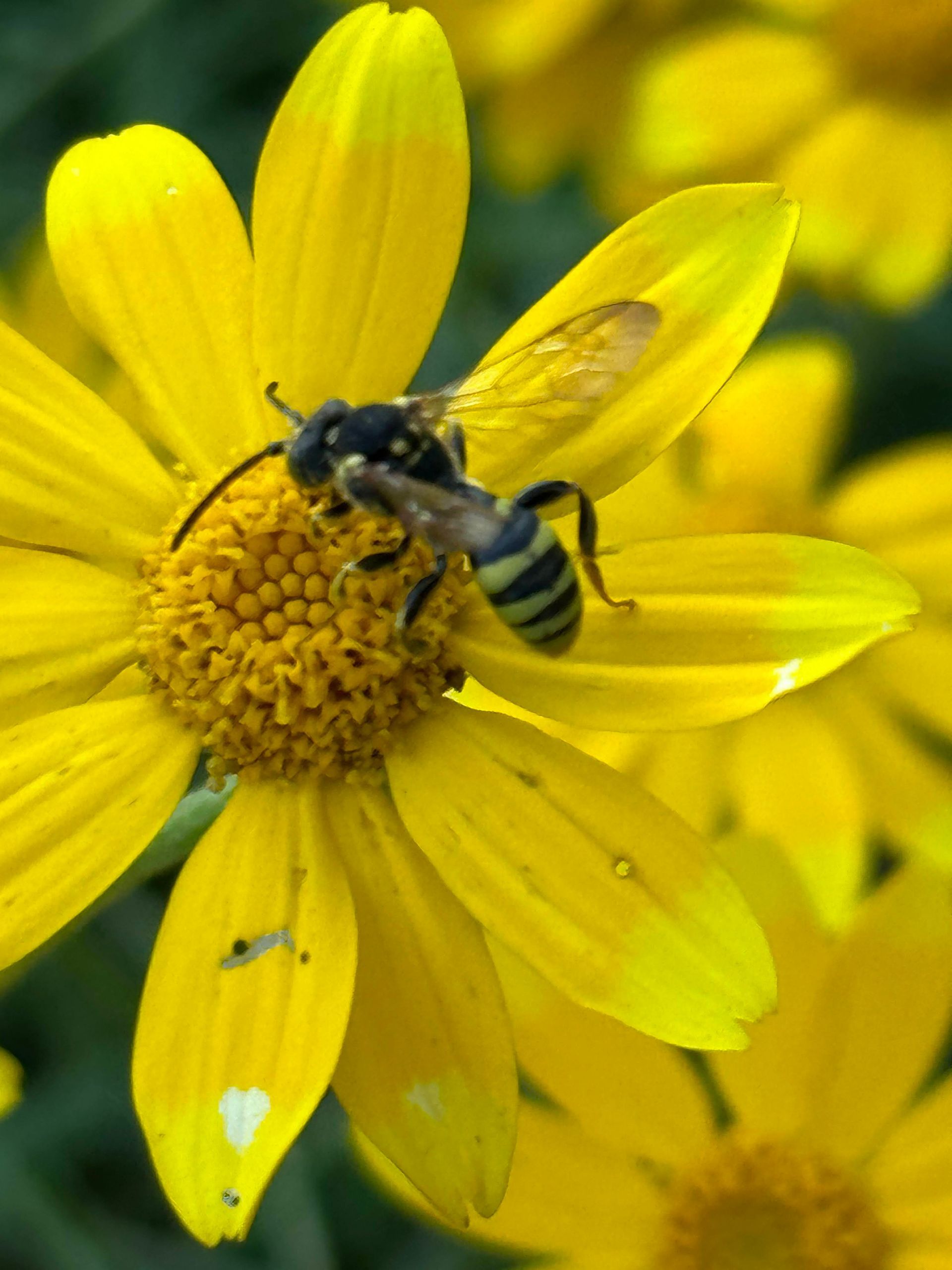Pollinator Garden Tips for the Pacific Northwest
What is a Pollinator Garden?
When we think of pollinator gardens, we often think of colorful flowers that attract honeybees. But a pollinator garden can be a diverse array of plants throughout your yard that provide pollen and nectar and host attributes for a much wider variety of pollinators such as butterflies and native bees.
Many people are surprised to learn that honeybees were introduced to North America by European colonists. There are thousands of other bees and pollinating insects that should merit our attention and consideration when thinking about a pollinator garden. Over 3,600 bees are native to our North American ecosystem; over 600 of those bees can be found in Oregon alone. Many of these are solitary bees that are not aggressive. There are also many “bee-like” species that are amazing pollinators as well. If you are interested in learning more on this subject, I list a few books and websites below and you can also reach out to schedule a pollinator garden consultation.
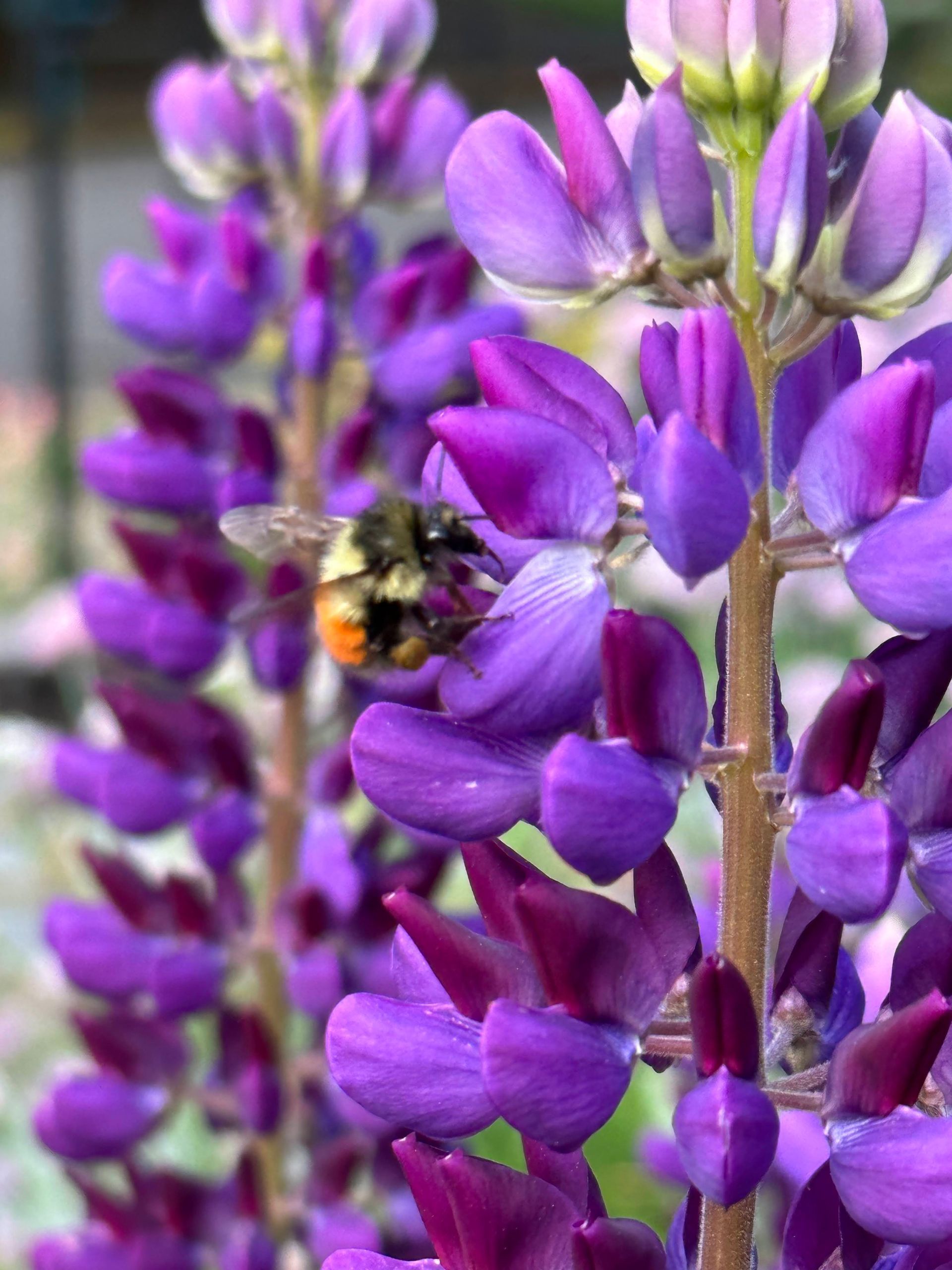
How Can I Create a Diverse Pollinator Garden?
In order to create a thriving and biodiverse pollinator garden, I recommend using my top five tips below. These recommendations will help your yard support a wide variety of pollinators such as bees and other beneficial insects that are native to the Pacific Northwest.
Tip 1. Choose Native Plants
One easy way to create a successful pollinator garden is to include native plants in your plant purchases! And don’t just choose those gorgeous flowering perennials. Shrubs, grasses, and trees are also key habitat, host plants, and food resource plants for our pollinators and beneficial insects, in particular caterpillars and other larvae who are most often specialist eaters. Caterpillars are also an important food resource for nesting birds who will feed them to their young, so this is a great way to support your entire local ecosystem. And for those caterpillars who do not become a baby bird’s breakfast, well, who doesn’t want more butterflies and moths in their yard?!
Tip 2. Do Not Use Pesticides
Using pesticides anywhere in your yard, including in your lawn, can be extremely harmful to pollinators. If you hire out your lawn maintenance, ask the company what products they are using on your lawn and then look up what is in those products. Even “organic” and “natural” insecticides and weed inhibitors can cause damage to beneficial insects. Personally, I’ve found that the more friendly habitat I provide at my own home, the more that problems with unwanted insects take care of themselves through a self-sustaining cycle.
Tip 3. Create Habitats for Ground Nesting Insects
Provide a variety of habitat options for ground nesting insects such as solitary bees by leaving leaves and plant debris in most areas, leaving a few spots without, and leaving up strong, hollow stems of perennials.
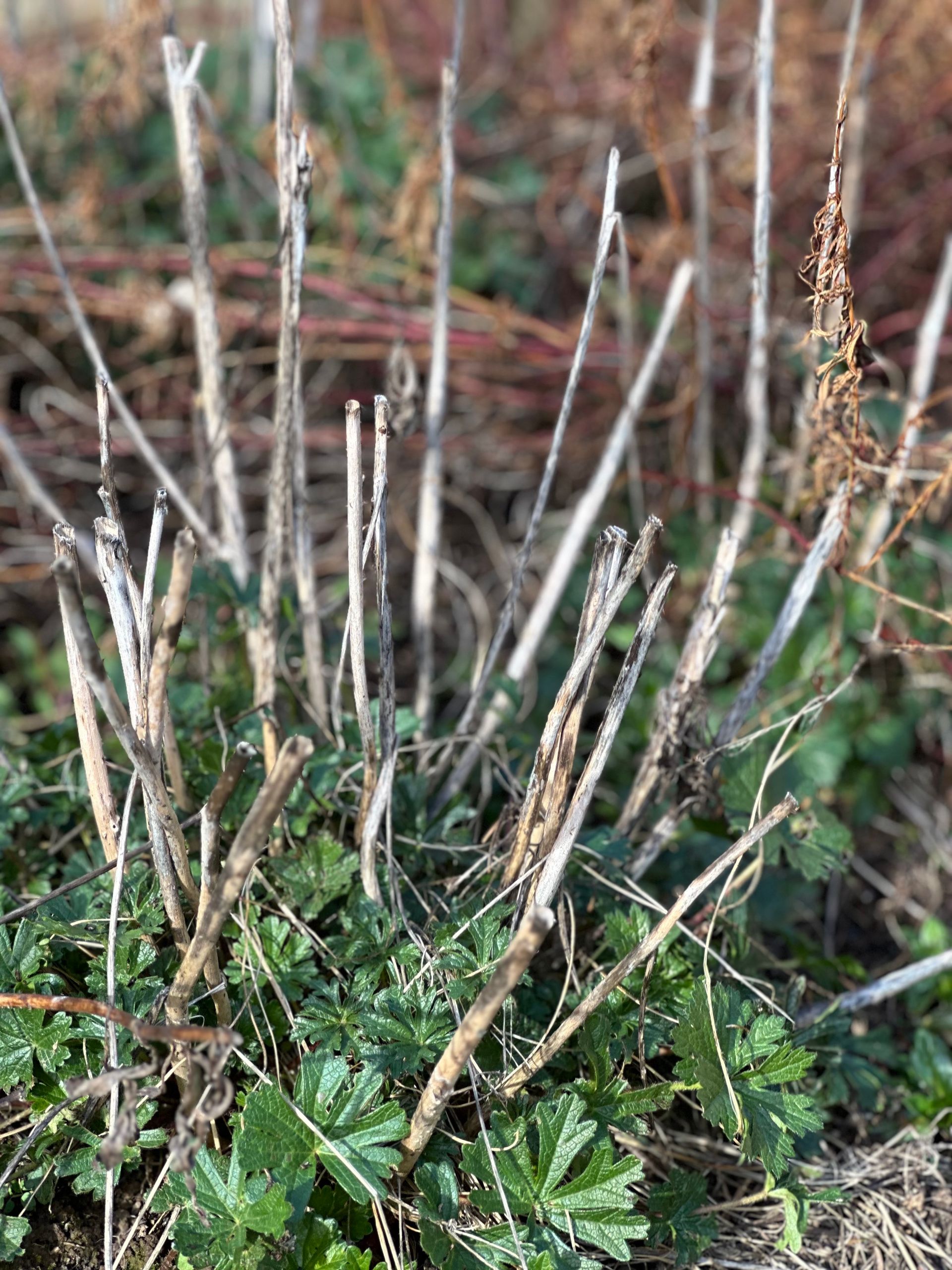
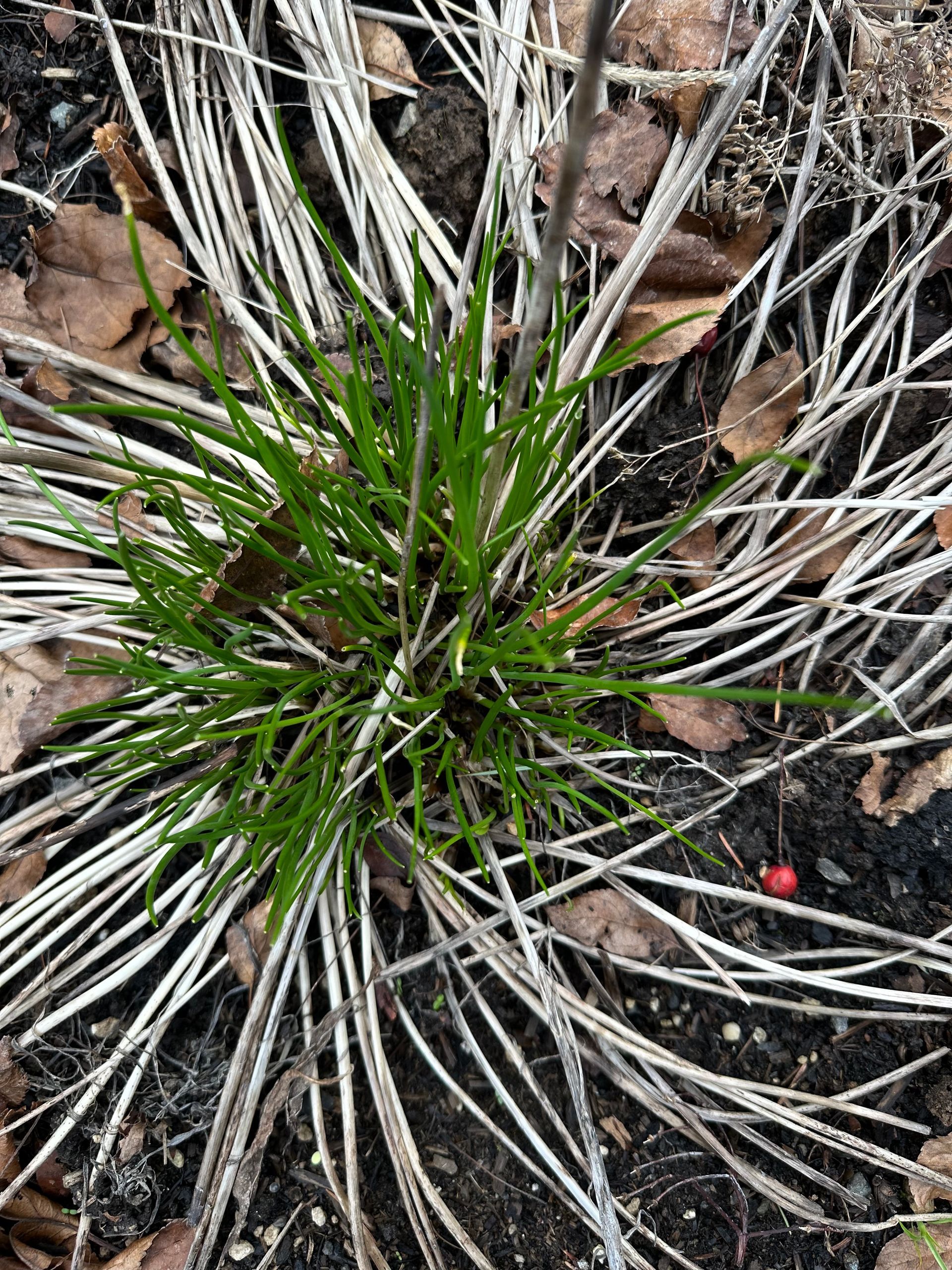

Tip 4. Choose Plants with a Variety of Blooming Seasons
Diversity and seasonal bloom time is important. I find that homeowners tend to plant many Spring flowering plants but not as many late Summer and Fall flowering plants. This may be because they are drawn to whatever is blooming at the nursery when they first arrive in Spring after our long, wet Winter. If thoughtfully planned out, we can provide blooms year-round for pollinators.
Tip 5. Plant in Multiples
Planting in multiples is when you create clusters or drifts of the same plant species. When planting in repeated groups, the plants naturally lend themselves to a pleasing appearance to us as humans, and as it happens, pollinators also prefer to graze along on the same type of plant. Planting in swaths or drifts can enhance their grazing options.
Pollinator Garden Examples
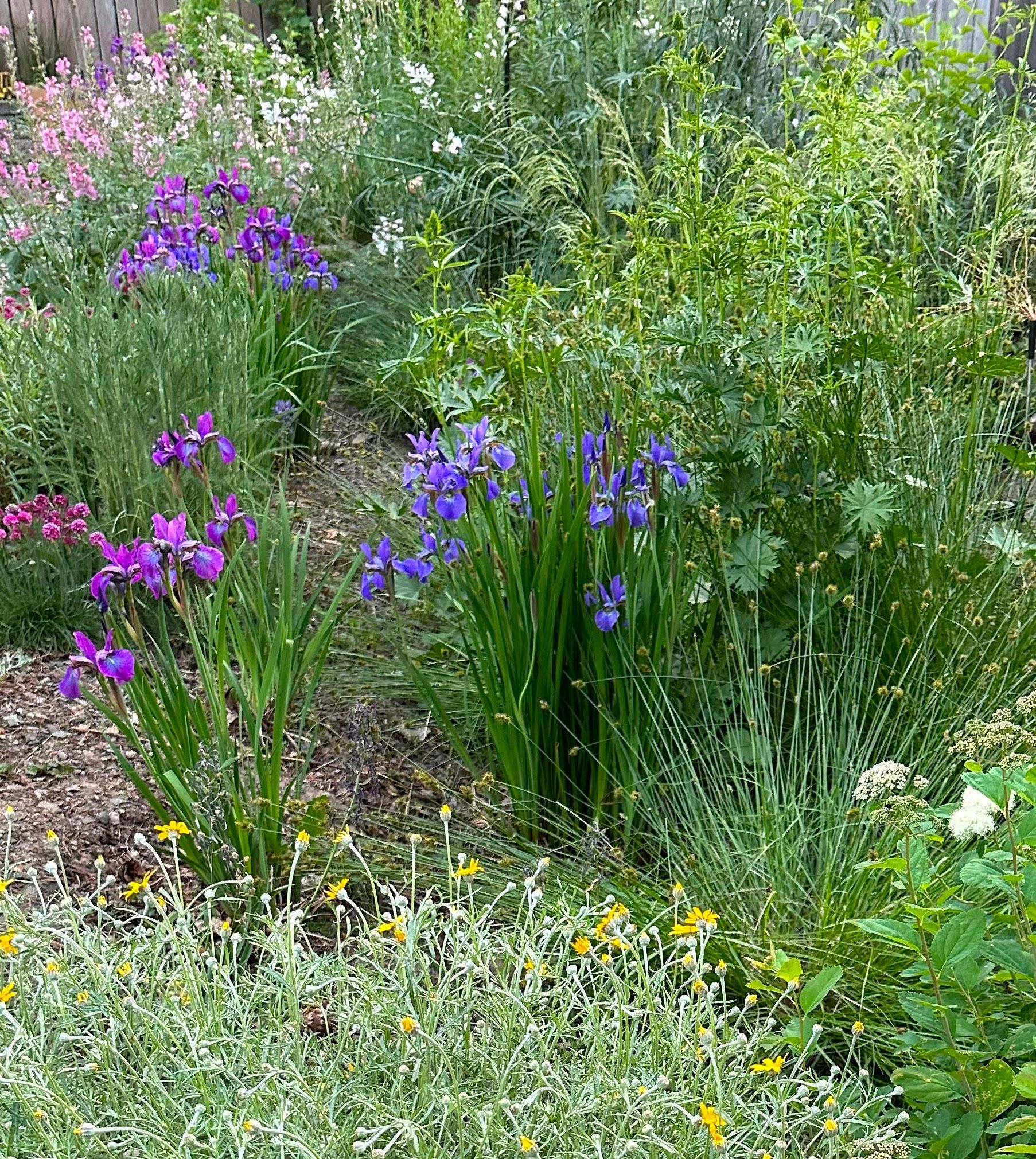
Design and planting by Nuthatch Garden Design
The pollinator garden shown above has drifts of mostly native perennials and shrubs, blooming throughout the year, and also has logs and rocks underneath for additional habitat layers. Debris and light pruning is left on site to protect the soil and provide for beneficial insects.
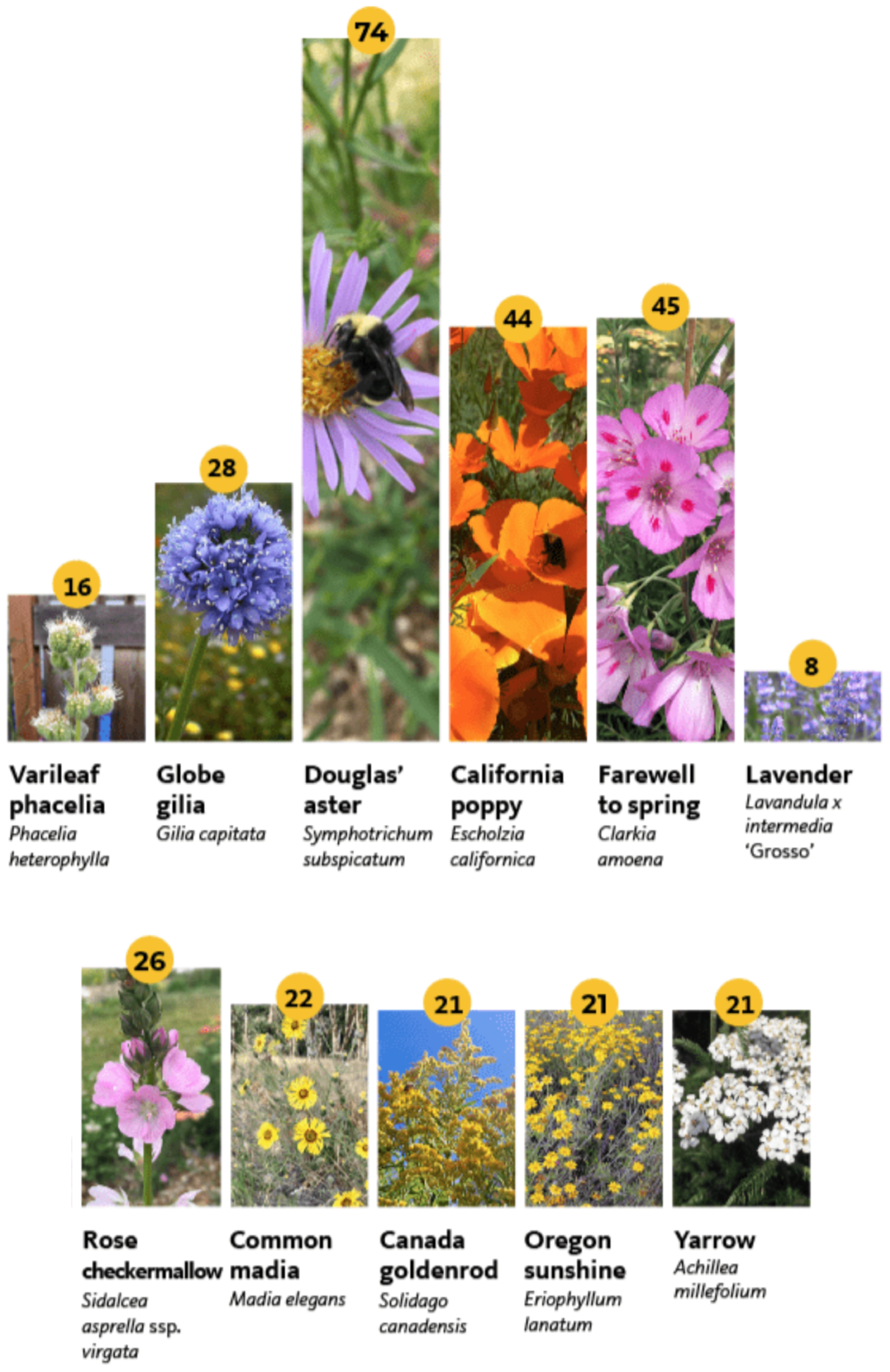
The chart above shows the number of different bee species that are supported by native plant types (read the full study from Oregon State University here). Non-native lavender, a Mediterranean plant that many homeowners tell me is their favorite "pollinator plant," supports a substantially smaller number of bee species compared to native plants. Incorporating native plants can quickly increase the diversity of bees visiting your garden.
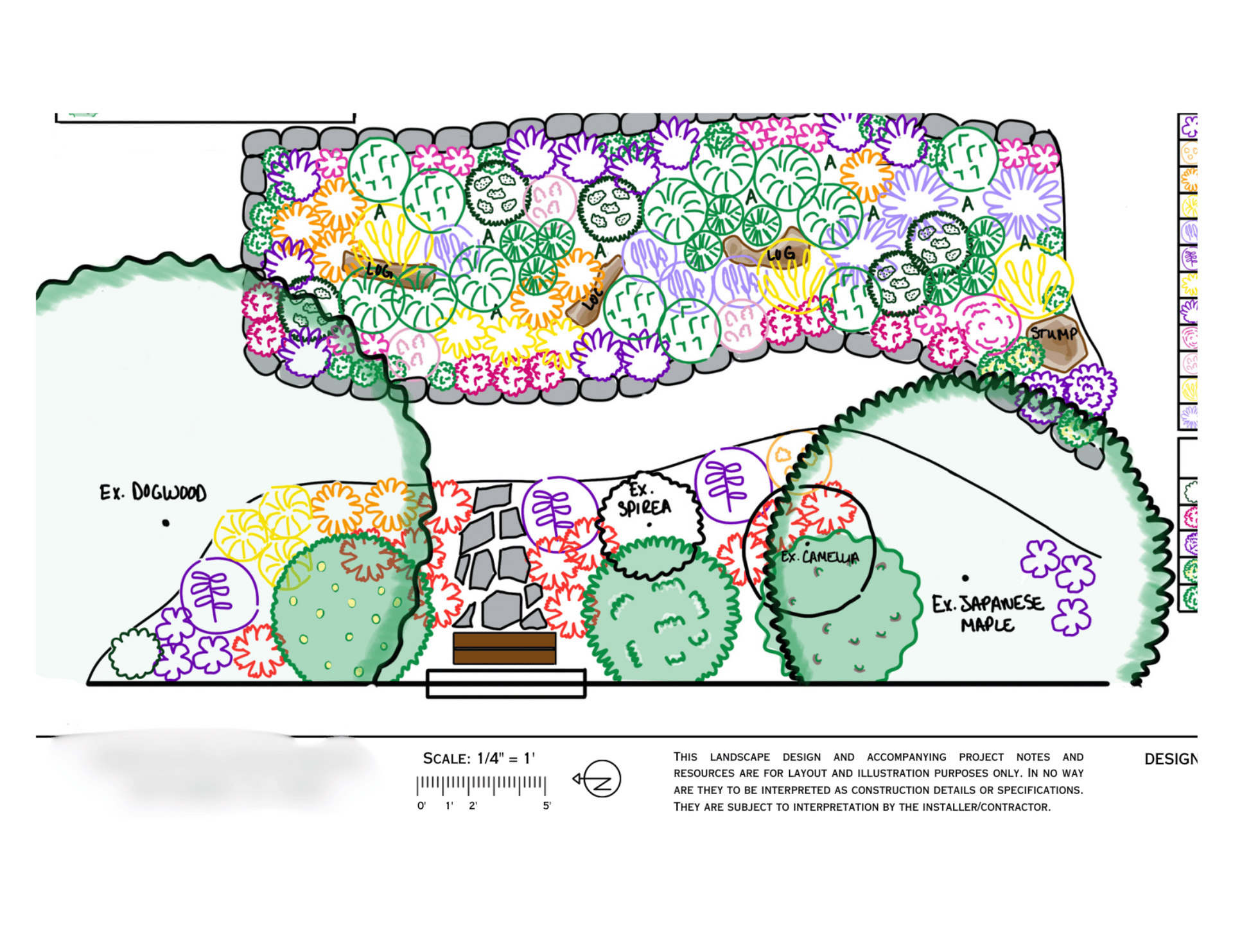
Design by Nuthatch Garden Design
Here is a fun example of a habitat-pollinator garden design that I created last year for a client who wanted a dedicated pollinator area adjacent to where they grow vegetables. In creating this design, I intentionally layered out the plants seasonally so that we could be sure there would be pollinator opportunities and flowering interest throughout the year. Grasses, brown seed heads, and habitat logs anchor the space in the Winter months.
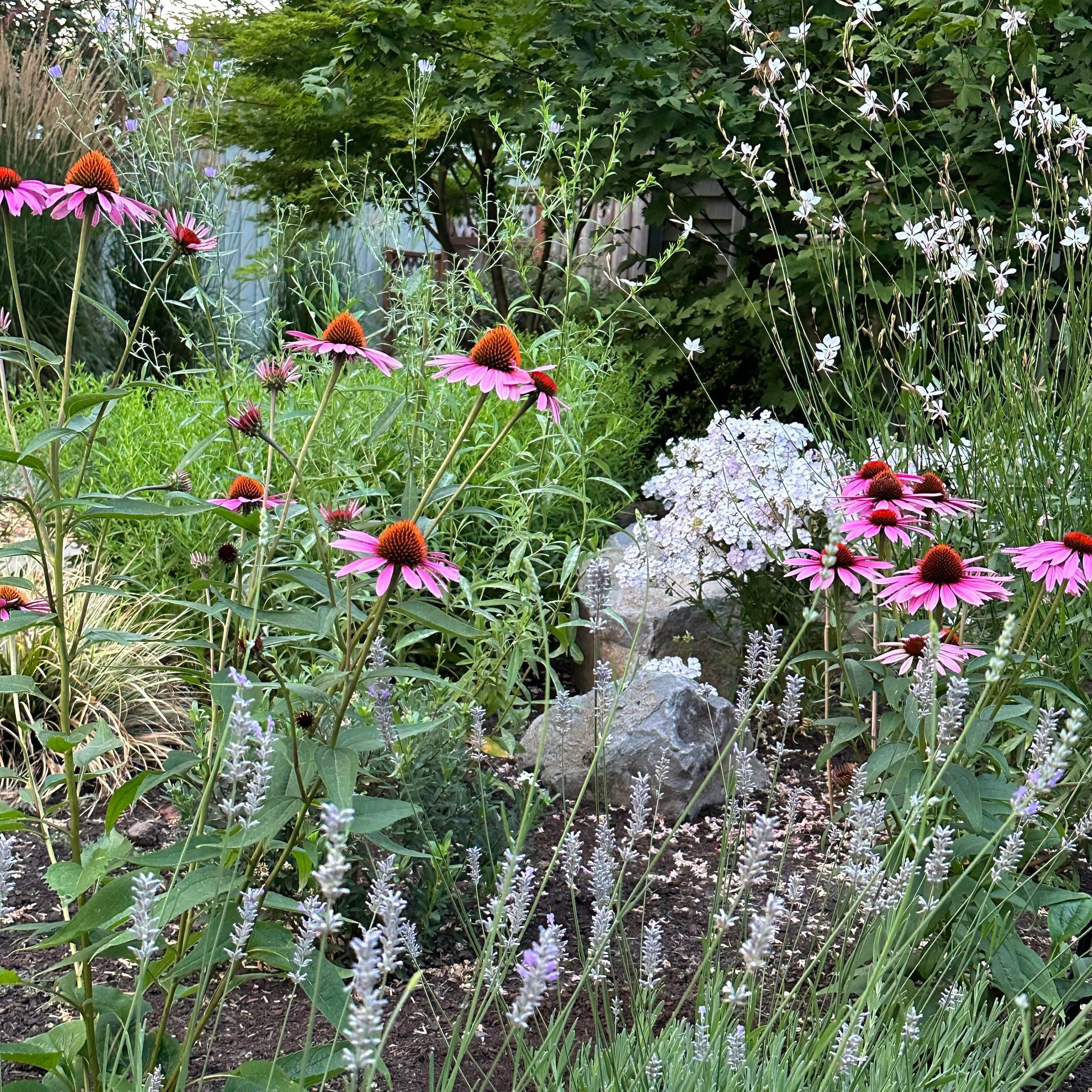
Design and planting by Nuthatch Garden Design
The home steward of this flowering front yard design shared her delight with me last Summer:
"I can't begin to say how happy I am with this garden. I've never had this many bees and butterflies enjoying the bounty of my yard before. Just being out there with life buzzing all around me and enjoying the colorful flora gives me great joy. Thank you."
Thank YOU for entrusting me with your landscape! I love creating beautiful and beneficial landscapes to inspire and uplift us all.
Additional Resources
- Xerces Society
- Backyard Habitat Certification Program
- Tualatin Soil and Water Conservation District
- Oregon State University, Extension Service
- Our Native Bees, Page Embry (Book)
- Bringing Nature Home, Douglas Tallamy (Book)
All of the photography included in this article is by Nuthatch Garden Design, LLC.
Nuthatch Garden Design, LLC
becky@nuthatchgardendesign.com
Licensed, Bonded, Insured: LCB # 100344
Areas of Service: Beaverton | Hillsboro | Tigard | Tualatin | Sherwood | SW Portland
All Rights Reserved | Nuthatch Garden Design, LLC


